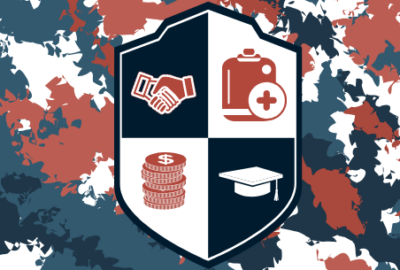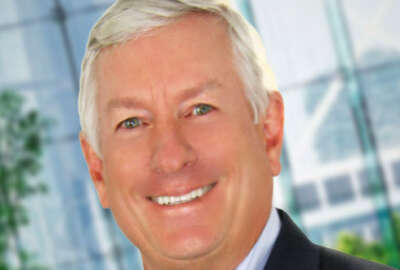Hubbard Radio Washington DC, LLC. All rights reserved. This website is not intended for users located within the European Economic Area.
What the return-to-the-office means for technology support
For one view of what this means for technology and the investments needed to support the new work mode, the Federal Drive with Tom Temin turned to the preside...
Best listening experience is on Chrome, Firefox or Safari. Subscribe to Federal Drive’s daily audio interviews on Apple Podcasts or PodcastOne.
By nearly all accounts, the federal workforce will be highly hybrid in the post-pandemic era. Few will return to the office five days a week. Few will telework five days a week. For one view of what this means for technology and the investments needed to support the new work mode, the Federal Drive with Tom Temin turned to the president of HP Federal Todd Gustafson.
Interview transcript:
Tom Temin: Mr. Gustafson, good to have you on.
Todd Gustafson: Thank you, Tom, good to be with all of you.
Tom Temin: And you’ve been following this market for quite some time, haven’t you?
Todd Gustafson: I have, I’ve had the pleasure of being with HP for over 30 years. So I’ve seen many different aspects of it, non like today.
Tom Temin: Yes. And so let’s get right into it. What do you think needs to change in terms of the technology mix, or what will the future infrastructure to support people that are all over the place? And not any one place in any given time, to be able to work effectively without blowing billions of dollars that you don’t need to spend?
Todd Gustafson: If you think back to March of 2020, it was for many of our government colleagues, it was around just getting devices and getting technology in the hands of all of our colleagues in the marketplace, something to use that was a notebook or desktop or something that had a camera and microphone. And given the supply constraints and the pace at which the market rapidly adopted work from home, it was all about just filling that immediate need. After that’s happened now, people are starting to recognize that this is the new norm for us, right? It’s not a finish line, necessarily. But I would say that we’re at the beginning of this starting line in terms of what does this new world look like for us? And so what does the devices look like? How do they want to integrate them into their home environment? And I’ll give you an example: We have three now-grown children, dogs, everything at home. I’m not unlike a lot of other folks. How does technology integrate into that environment so that you’re in an environment where the sound is not obtrusive to your engagement, etc. And so you’re starting to see companies like HP, adopt video technologies, microphone technology, speaker technologies that recognize an environment that may not be as sterile as a work environment.
Tom Temin: So you’ve outlined a range of issues here. One is the network. One is the cybersecurity and the other is just simply the end user devices that have to accommodate that. And let’s talk about the end user devices. That’s kind of your specialty there. When are we going to get higher quality cameras and microphones and just those things, not because they’re nice to have, but because they really do improve collaboration, and reduce the fatigue of being on these video calls that so many people express?
Todd Gustafson: I think that technology just today, it’s continuing to have improvements. We announced just last month that we’re going to acquire Poly. Maybe you know, Poly is one of the leaders in collaboration, both in audio and video collaboration. And a lot of that collaboration is happening, if you will, in a conference room and an office environment. And we’re adapting that same technology to bring it into a device. And the reality is most of us don’t want to carry an extra microphone and extra camera and extra speaker with us. So how do we take that technology that may have been separate components standpoint and build it into a device, so that you get very high quality video and audio and in an environment where you may have a 20 to 24-hour battery life and a device where you don’t have to carry a power cord?
Tom Temin: So then it seems like the IT staffs in agencies need to really rethink the mix of what it is they’re going to do in the next 1, 3, 5 years.
Todd Gustafson: Just last week, I was out at Department of Energy in Albuquerque and I’ll give you a real example. Because one of the challenges that they’re facing and they’re talking about is how do they continue to acquire workforce where in the past, they may have only had 1% to 2% job openings? Now, it’s in a double-digit range. And so how do they, might use technology, particularly from a generational standpoint, to attract a new workforce, number one, and how might they integrate that new technology in a rich collaboration environment in a way that attracts that workforce? So they’re seeing not just pay, necessarily, or government benefits as a key element, but rather the technology is a key element to attract a new workforce.
Tom Temin: Yes, because everything you read about the emerging graduates and younger workers in the private sector, they’re very demanding on what they’ll be doing specifically, who they’ll be working for, and the environment that they’ll be working in.
Todd Gustafson: They’re driving the change, which is really refreshing, if you will, as opposed to absorbing the change. They’re driving that change and they’re pushing the technology limits and what they want to do and how they want to do it, and how on any given moment, they integrate their personal environment, in their work environment, and they expect that to happen on the same exact device.
Tom Temin: We’re speaking with Todd Gustafson. He’s the president of HP Federal. And what about printing every – and you sell printers – but every government CIO that I’ve talked to says the last thing they’re going to do is send everybody home, also with a printer. And really, they’re looking at ways to finally get rid of printing. And I presume that’s to some degree in the office. What are the best alternatives to giving everyone a printer at home?
Todd Gustafson: You know, it’s interesting, Tom, that you are right, there’s an element that the printing environment is certainly changing. And if we’re not in the office, you know, we’ve determined that between 10 and 20% of our normal print volumes are down, that’s happening across the industry. The reality is that all of us still use print as some part of our everyday work life. And the question is, how can we print securely? How can we manage our costs? How can we control that environment in such a way? In a lot of cases, what I think it requires is industry experts, companies like HP that can come in and do an evaluation of what does your workforce look like? What does your printing environment look like? Might you downsize your environment or make it more efficient? And the reality is that unless you drive that optimization in a very proactive way, you’re likely going to have excess cost in your environment. And so lots of companies in the marketplace can help drive that optimization.
Tom Temin: All right, so maybe sum it up for us then, what does an IT investment strategy look like for the next wave of what work is going to look like?
Todd Gustafson: So I think there’s a couple of things that organizations and government agencies need to look at. First is just talk about personas. Who is your workforce? What does that workforce look like? And what are the job responsibilities? And so your devices and the technology you implement is going to vary depending upon the knowledge worker and what they’re expected to do? That’s first and foremost. One size won’t fit all, number one. Number two is what are the requirements of those folks? Are they working in finance? Are they working in engineering, right? So that will help drive that and what is the mobility of that workforce? What are they doing there? And then lastly, recognize that security is a multi-layer security element, right? We think about cyber. No longer is it about putting a fence around your environment but recognizing that that fence has to be penetrable because you want email, you want video, you want internet usage. And how might you adopt technologies like micro virtualization, etc., that helps protect your environment in a way that makes it less susceptible to bad actors?
Tom Temin: And there’s also the question, I guess, of having zero trust, which is policy and law now really in the land, and yet not making it so difficult that people don’t log on or they find workarounds.
Todd Gustafson: I totally agree. And the workaround is the biggest challenge.
Tom Temin: And from what you’ve seen over the last couple of years dealing with federal agencies and their IT and acquisition staffs, is the acquisition system that is generally in place, is that adequate for going forward? Or do you see any possible updates there that might be needed to support all of these new work requirements?
Todd Gustafson: We’re beginning to see real leadership across the government on lifecycle management for devices. And you have examples in the Department of Veterans Affairs, you have the U.S. Navy, the Air Force is three key examples where they’re really adopting a full lifecycle management from product definition, through sustainability – the products they acquire, how are they sustainable? How do we recycle that environment? How do we dispose of that environment? And how might they adopt technology to help them through lifecycle management? And how do they remove themselves from asset management? And how do they allow industry to do that best? That’s one of the key elements that I see is driving new acquisition behavior.
Tom Temin: So we could have the return of seat management in the 21st century.
Todd Gustafson: That’s a great example, Tom.
Tom Temin: All right. Todd Gustafson is president of HP Federal thanks so much for joining me.
Todd Gustafson: Glad to be with you.
Copyright © 2024 Federal News Network. All rights reserved. This website is not intended for users located within the European Economic Area.
Tom Temin
Tom Temin is host of the Federal Drive and has been providing insight on federal technology and management issues for more than 30 years.
Follow @tteminWFED





